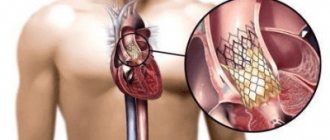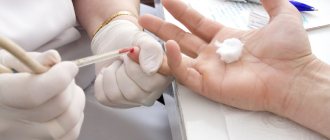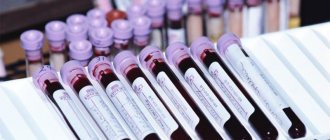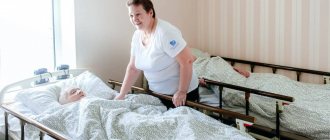Chemotherapy is often accompanied by negative reactions of varying severity. Each drug causes certain complications, destroying both tumor cells and healthy, rapidly multiplying epithelial, reproductive, bone marrow, etc. cells. The body's response to the aggressor can occur instantly - immediately at the time of administration of the cytostatic, with a delay of a day or remotely, several years later.
Why does my blood suffer after chemotherapy?
Treatment with cytostatics makes it possible to eliminate some types of malignant neoplasms. During the course, chemicals can damage the structure or inhibit the growth of defective cells. For each type of tumor, individual treatment protocols are developed with drug use schedules and precise dosages, depending on body weight.
Unfortunately, today there is no drug in oncology that meets the basic requirements for safety and high efficiency. Namely, the effect on absolutely all types of tumor cells and the absence of toxicity to the body.
Often, after a course, a person’s blood sharply worsens its composition and characteristics. A decrease in the level of white blood cells and platelets is called “myelosuppression,” which peaks in the first or second week of starting chemotherapy.
Beverages
How to raise leukocytes? Drink a drink with chicory, royal jelly. Plantain juice will do. You can brew barley and Rhodiola rosea extract.
Pomegranate juice is very useful, which can be consumed in pure form or diluted with a little water. You can make compotes from strawberries, currants and apricots. You can add nettle and rosehip to such drinks.
However, it should be understood that all the described recipes may not suit every person; most likely, you will have to go by trial and error, trying different options and choosing the most effective option for yourself.
Clinical manifestations
Developing leukopenia can cause unpleasant symptoms:
- weakness and fatigue;
- dizziness;
- signs of intoxication;
- feeling of lack of air;
- fever, increased body temperature;
- bloating;
- frequent and painful urination;
- joint and muscle pain, cramps.
In the absence of specific medical care, bacterial complications and exacerbation of chronic infections develop. Which necessitates the abolition of chemotherapy, and this, in turn, leads to a relapse of the tumor process.
What tests are needed to check blood?
Damage to the bone marrow is reflected in changes in blood counts. Patients have to regularly undergo a general blood test, which diagnoses the risks of complications:
- a decrease in neutrophils leads to suppression of immune activity;
- a drop in red blood cell levels is associated with the development of chronic anemia;
- A low platelet count indicates a deterioration in blood clotting.
Based on the information received, you can determine whether it is worthwhile to carry out therapy with this drug, replace it with another, or reduce the dose. When making a decision, much attention is paid to the general condition of the patient.
An adult should normally have 4-9x109 leukocytes. Deviations from these numbers indicate a malfunction in the body. High values indicate a lack of resistance, protection from bacteria and viruses, low levels indicate bone marrow damage, impaired blood circulation, or cancer.
Leukopenia
A polyetiological condition in which the level of leukocytes decreases is called leukopenia. This condition often occurs against the background of the influence of certain factors on the bone marrow, the active production of white blood cells begins, and young blood cells are destroyed, and accordingly, the process of formation of mature leukocytes stops.
The main reason for the appearance of this condition is chemotherapy and radiotherapy, which is carried out in the treatment of cancer. But this is not the only factor that provokes leukopenia; in particular, it may be:
- renal failure;
- rheumatoid arthritis;
- deviations at the genetic level;
- infectious diseases: rubella or hepatitis, others;
- tuberculosis;
- lack of vitamins and macroelements in the body: B vitamins, copper, folic acid;
- prolonged contact with harmful chemical compounds.
Methods for normalizing indicators based on frequent deviations
Blood restoration after chemotherapy is based on the administration of agents that increase the number of platelets and stimulate the formation of mature red blood cells. This helps to raise hemoglobin levels, improve the functioning of the heart and blood vessels, and improve blood supply to tissues.
If the patient has swelling, infiltrates, necrotic destruction of the epithelial layer, this indicates the possible death of erythrocyte sprouts of the bone marrow. In this case, a transfusion of blood, platelets or red blood cells can help. In more severe situations, you will have to resort to a bone marrow transplant.
To quickly restore your blood count, your doctor will prescribe:
- Sorbifer Durules is an antianemic drug. Active substances are iron sulfate and ascorbic acid. Thanks to this composition, oxidative processes and protein recovery from blood cells occur in the body. The tablets are taken orally (by mouth) 1-2 times a day for three months or until a normal hemoglobin level is achieved;
- Ferrum LEK is also an antianemic agent with the main component of iron hydroxide polymaltosate. Available in ampoules for intramuscular administration, chewable tablets and syrup form. The dosage is set individually according to age, clinical situation and indications;
- Totema is a combined antianemic solution for oral administration containing trace elements: iron, copper, manganese. It is necessary to strictly follow the dosage regimen prescribed by the doctor. It is possible that tooth enamel and stool may darken to black, which is considered normal;
- Filgrastim-Nanolek is a stimulator of leukopoiesis, an immunomodulator for intravenous and subcutaneous injections. Represents a non-glycosylated, highly purified protein. Causes a slight increase in the number of monocytes and a significant increase in neutrophils. Injections are given at a rate of 5-12 mcg per kilogram of body weight. The duration of the course lasts until the norm of neutrophil granulocytes is established, but no more than two weeks;
- Neupogen is an analogue of the previous one with the same effect for subcutaneous administration.
- We recommend taking VIALIFE capsules or VIALIFE solution, because they contain the highest possible concentration of chlorophyll, which: strengthens the immune system;
- enhances cell regeneration;
- saturates tissues with oxygen;
- has antioxidant, anti-inflammatory, detoxifying effects.
Treatment of cancer patients after drug therapy for cancer
The use of drugs to stop a malignant process has many positive aspects, with the exception of one – side effects. However, they can be managed if treatment is started promptly after cancer chemotherapy.
It is prescribed by the attending physician, based on the results of the latest tests, hardware studies and the patient’s complaints. Treatment includes:
- diet;
- immunomodulators;
- symptomatic medications;
- psychological help.
Diet after cancer treatment
One of the common reactions of the body to therapy with drugs containing poisons and toxins is nausea and loss of appetite. You can’t refuse food, because it gives you strength to recover, but you’ll have to reconsider your diet.
Basic nutritional recommendations for cancer patients recovering from chemotherapy treatment:
- Eat small meals, but often. Invite your friends; having a meal with them is much more pleasant than alone.
- Include new foods in your diet (check with your doctor first).
- If you feel a metallic taste in your mouth, replace your usual cutlery with plastic ones.
Recommendations for the diet itself concern not only food, but also the preparation of various dishes:
- Steam or bake food in the oven. This way it will retain more nutrients.
- Eat more proteins - turkey, skinless chicken breast, sea fish (preferably red), fish caviar (any).
- Add dairy products - sour cream, cottage cheese, fermented baked milk, yogurt, whole milk.
- Prepare salads from greens and vegetables using sunflower, flaxseed, and olive oil.
- Introduce cheese, butter, eggs, and legumes into your diet.
- For a snack, use nuts, wheat germ, and fruit smoothies.
- For first courses, prepare cream soups and puree soups, including black bean and lentil soups.
- Freshly squeezed vegetable, fruit, and berry juices are beneficial.
- As a side dish, eat porridge - buckwheat, rolled oats, barley, rice.
A cancer patient undergoing treatment after exposure to chemotherapy needs to drink about one and a half liters of fluid per day. It is recommended to consult a doctor on this issue. If there is an accumulation of fluid in the peritoneum, lungs or pleural cavity, its amount is limited.
Immunomodulators in post-cancer treatment
Chemotherapy is extremely stressful for the human body. The bone marrow responsible for blood is most damaged. After treatment, her indicators deteriorate significantly, showing a lack of basic components - leukocytes, erythrocytes and platelets, which causes leukopenia, erythropenia, thrombocytopenia.
The lack of white blood cells in the body affects the immune system - it becomes so weak that the patient can catch any infection or virus to which he was previously immune. To correct the condition of cancer patients, treatment after chemotherapy always includes immunomodulator drugs that stimulate hematopoiesis (the process of hematopoiesis in the bone marrow):
- Derinat;
- Granocyte;
- Leucomax;
- Glutoxim;
- Lycopid;
- Galavit;
- Neupogen;
- Deoxynate.
Immunomodulatory drugs are used to improve the quality of life of patients with cancer. Their effectiveness has been proven by more than 30 years of use in cancer patients during chemotherapy and during the recovery period.
Symptomatic treatment
The first priority is to eliminate or reduce pain in cancer patients. For these purposes, analgesics and non-steroidal anti-inflammatory drugs are used. They are often combined with sedatives and tranquilizers. Painkillers are prescribed according to a scheme from weak to strong with a gradual increase in effect. If the pain is severe or the disease is advanced (inoperable stages of cancer controlled by chemotherapy), the doctor prescribes narcotic analgesics. However, such means are resorted to only as a last resort and for a short period of time (up to 3 days).
Treatment of gastrointestinal disorders
The first thing the doctor does is determine the cause of the condition. Nausea and vomiting occur not only from poisoning of the body of a cancer patient during treatment with toxic anticancer drugs. This often occurs as a result of intestinal obstruction - mechanical or dynamic (cerebral edema, hypercalcemia). If nothing serious is found, the cancer patient is prescribed Cerucal or Dexamethasone for treatment; if they are weak, Zofran, Navobane, and Osetron may be prescribed.
Constipation is one of the side effects of chemotherapy in particularly severe patients. Here, the doctor’s recommendations are exclusively individual. If there is no question of surgical treatment of constipation, step-by-step therapy is carried out:
- Cleansing or oil enema (at night).
- Orally castor or vaseline oil.
- Laxative – Guttalax, senna leaf, Bisacodyl.
Diarrhea occurs either as a functional impairment or as a neuropsychiatric complication after cancer chemotherapy. Treatment includes:
- diet;
- antidiarrheal drugs (Loperamide);
- saline solutions to replenish water-salt and electrolyte balance (Regidron);
- medications that restore intestinal microflora (Linex, Bifidumbacterin, Lactofiltrum - an enterosorbent that restores intestinal microflora);
- Enterosorbents - activated carbon, Diosmectite, Polyphepan, Polysorb and others.
If tests reveal that the diarrhea is infectious, antibiotics are prescribed to treat the condition.
Liver and kidneys
Both organs are involved in filtration, and therefore are more affected than others during cancer treatment. To restore the liver, you first need to cleanse it of harmful substances accumulated in it. For this purpose, Legalon is used, a preparation based on milk thistle seeds. After cleansing, the main task is to restore the liver cells damaged by chemotherapy, so that the organ works correctly again and begins to fulfill its direct function - to cleanse the blood of harmful substances. For treatment, dietary supplements are used - Essentiale Forte, Karsil, Flor Essence.
The kidneys are a little more complicated. Aggressive exposure to toxic/poisonous drugs can cause uric acid nephropathy and kidney failure. To restore proper kidney function, use:
- Nephrin, Canephron, Chofitol, Nephrofit.
- Collections from medicinal herbs (corn silk, kidney tea, borage and others).
If inflammatory diseases of the kidneys and urinary tract are diagnosed, antibacterial drugs are prescribed for treatment - Nitroxoline, Furadonin.
Recommended Lifestyle
In folk medicine there are many proven recipes that give a chance to increase the number of leukocytes and raise hemoglobin. Here are a few fairly simple, but no less productive ones:
- Boil unpeeled oat grains with milk for half an hour. Take throughout the day until complete recovery;
- rosehip decoction - 150.0 crushed fruits, pour two liters of water. Boil for 20 minutes over medium heat, set aside for 12 hours to infuse. Then drink instead of tea;
- improves the composition of hemoglobin by eating finely grated carrots mixed with honey or sour cream before breakfast;
- You can cleanse your body of toxins using flaxseed jelly made in a water bath. It is necessary to consume one liter in the afternoon. Duration – at least 6 months;
- This special delicious mixture will please everyone without exception. Raisins, prunes, dried apricots, walnuts, and lemon are taken in equal proportions. Grind in a blender and season with honey. Store in a closed glass jar on the refrigerator shelf. Eat a tablespoon 3 times a day.
Nutrition
In addition to the above remedies, white blood cells and hemoglobin after chemotherapy can be increased through proper diet. A well-designed diet is the key to a quick recovery:
- chicken and beef broth;
- boiled liver;
- fruits, berries, red vegetables (beets, pomegranates, cranberries, black currants, etc.);
- buckwheat for breakfast, topped with kefir in the evening;
- red fish, stewed or baked;
- 50 g (no more) per day of natural grape wine;
- honey - twice a day before meals, 2-3 tablespoons;
- lentil soups and porridges;
- chicory drinks, fruit drinks, freshly squeezed juices, green tea;
- dill, parsley
Do not forget that any diet must be agreed with your doctor. Products included in dishes must contain vitamins C and B12, folic acid, and iron. But, one must also take into account that the excess content of these components leads to the rapid proliferation of cancer cells. And if you are already taking dietary supplements with a similar composition, then your diet should be balanced taking this fact into account.
Boosting White Blood Cells Through Nutrition
Proper nutrition is essential to maintaining a healthy immune system. You should include foods that are rich in:
- potassium;
- zinc;
- Omega-3 polyunsaturated acids;
- vitamins C, E.
The diet should contain more citrus fruits (tangerines, oranges, lemons), which stabilize cell membranes. Walnuts and salmon, which contain Omega-3, help protect cells from microorganisms. Zinc and vitamin E, found in chicken and turkey meat, spinach and white cabbage, are needed to strengthen and stabilize cells.
It is impossible to increase white blood cells without proper nutrition; seafood and fish play an important role in this
If the level of leukocytes in the blood is low, the patient receives recommendations on nutritional standards from the doctor. It is necessary to include more foods rich in protein and vitamins in your diet. At the same time, it is necessary to reduce the consumption of animal fat, meat, and liver.
Many vitamins are found in plant foods: vegetables, herbs, berries, fruits. Beetroot is especially useful for leukopenia. It can be eaten raw or boiled. It is useful to drink beet juice, which should be allowed to brew in the refrigerator for at least two hours. For fruits, it is recommended to eat citrus fruits and pomegranates.
Sources of protein during this period should be chicken eggs, chicken and turkey meat, and walnuts. As for dairy products, it is recommended to eat them without restriction.
The menu needs to include more seafood and fish. Preference should be given to red fish, such as salmon. In addition, caviar (red and black) is useful. Seafood - shrimp, crabs and others.
What is the effectiveness of photodynamic therapy?
The body, weakened by the disease and numerous destructive courses of chemotherapy, is difficult to recover. Recently, patients are increasingly choosing to treat malignant and benign tumors of various locations without incisions and scars using PDT. The action of a unique technique used in our clinic by Dr. Borisov, called Selective Chronophototherapy (SCP), which is based on photodynamic therapy, is capable of activating a cascade of biochemical and cellular reactions to regulate the level of immune status indicators. Our method has a great advantage in that the wavelength allows it to penetrate places that are difficult to reach for surgery, such as, for example, the intrahepatic ducts.
To create conditions for the death of tumors, a special apparatus and a photosensitizer are used. In our case, this is a natural product of plant origin - chlorophyll, which does not have a mutagenic or toxic effect. The administered PS accumulates in energy-deficient cells, and, under the influence of a light beam, a reaction occurs. As a result, the oxygen present in biological tissues acquires a new form that has a damaging effect on these same cells.
In addition, photodynamic therapy is successfully used in infectious and inflammatory processes. Unlike antibiotics, its antibacterial effect does not depend on the sensitivity of microorganisms, so the effect is equally destructive for viruses, bacteria, and fungi.
Prevention
Despite a fairly large number of prescriptions and medications that solve the problem of how to quickly raise white blood cells after chemotherapy, there are still no special measures that would help avoid this phenomenon.
It is recommended to adhere to the rules of a healthy lifestyle, give up bad habits if possible and undergo regular medical examinations. Carefully monitor your body, respond to the signals it gives, and do not leave even the simplest diseases untreated.
Regularly replenish the supply of vitamins in your body, they will not only help increase the number of leukocytes, but will also be an excellent preventative against colds and viral diseases. It is necessary to replenish the supply of vitamins not only through synthesized drugs, but also by consuming fruits and vegetables. Play sports and try to be less nervous; if that doesn’t work, then consult a psychotherapist or take herbal-based sedatives.







